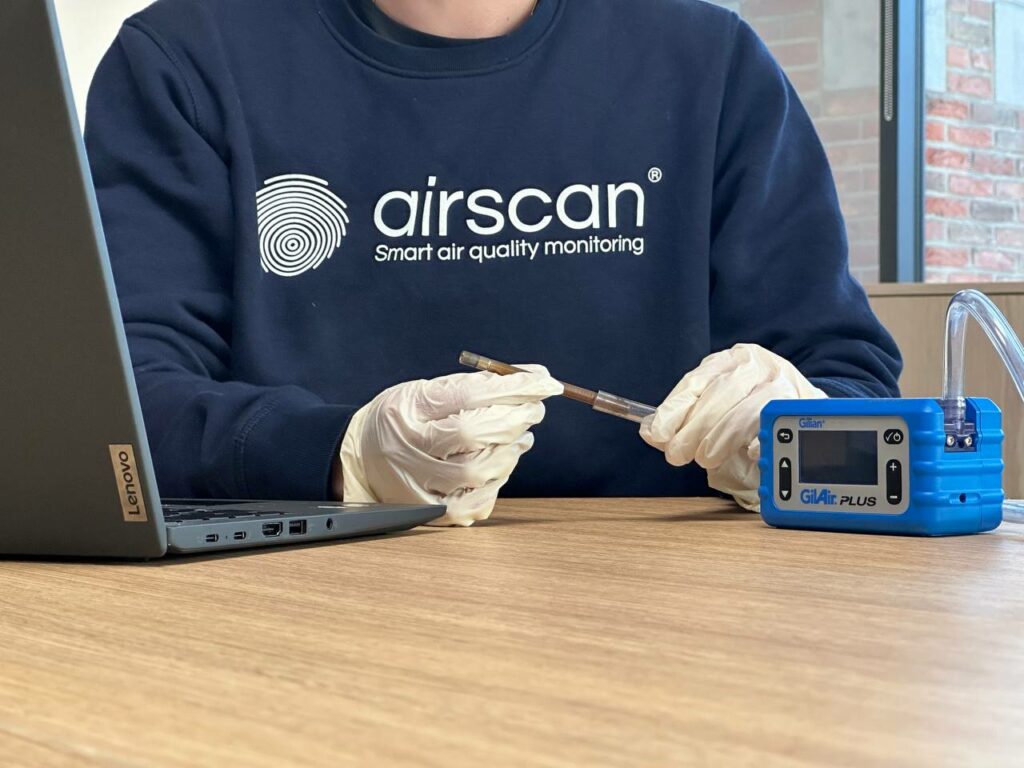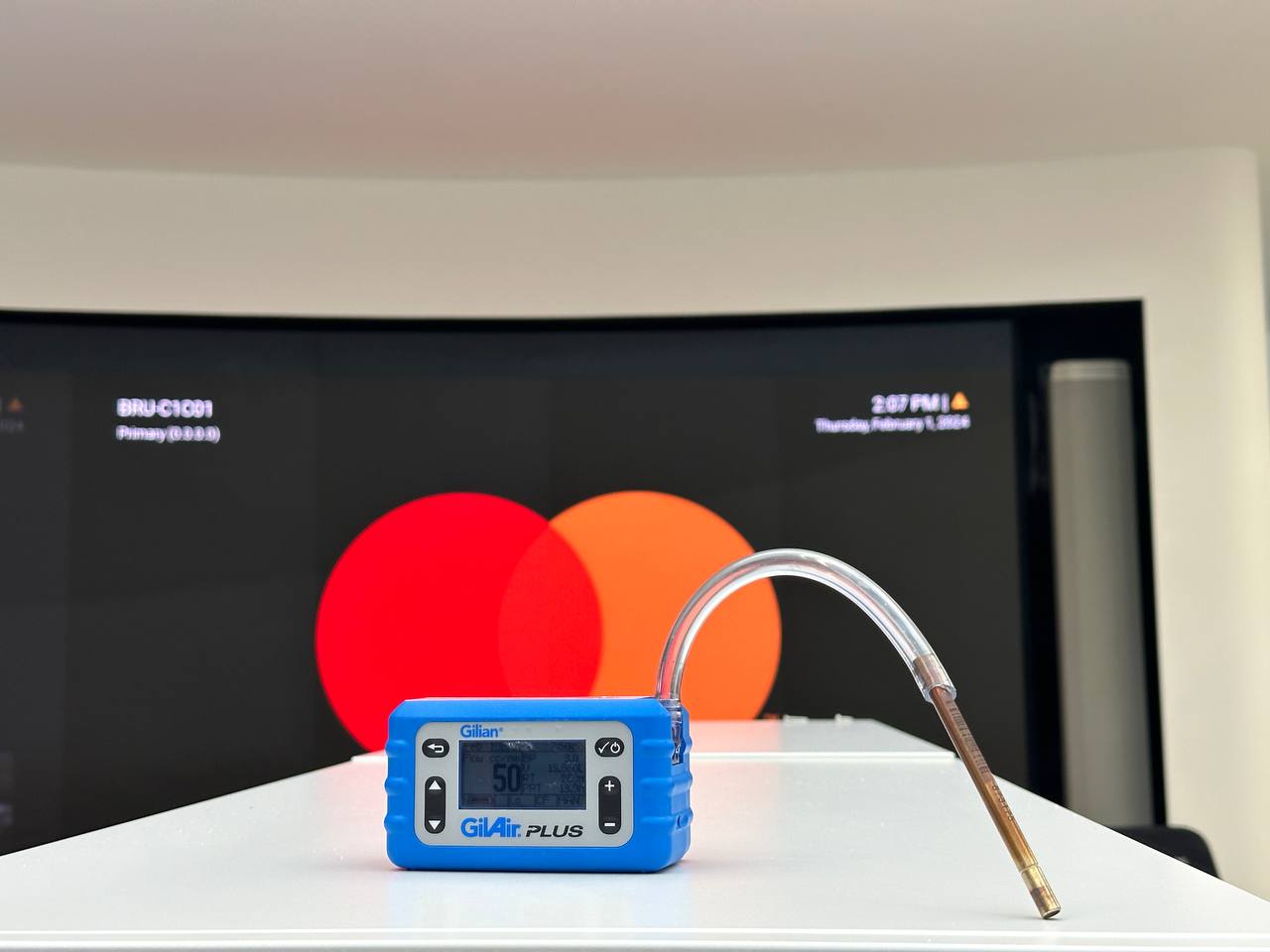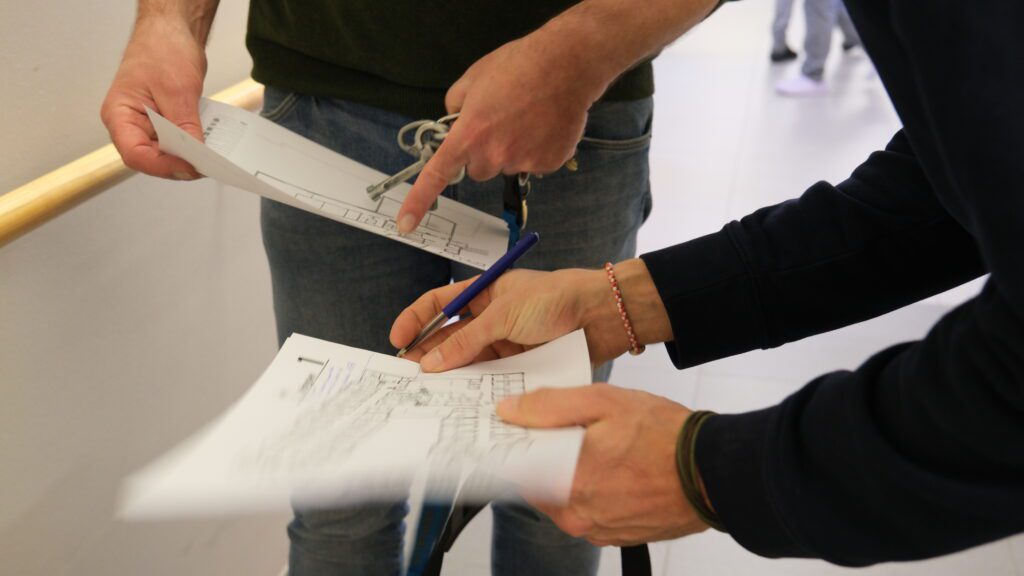Mastercard x Airscan: BREEAM certification

Scope
Mastercard’s newly renovated HQ in Belgium set high standards for sustainability, aiming for BREEAM certification. Here’s how Airscan played a crucial role in helping the banking pioneer achieving this goal. Let’s dive into the details of the project.

Project Overview
BREEAM stands for Building Research Establishment Environmental Assessment Method, and is a leading sustainability assessment method for master planning projects, infrastructure, and buildings. It recognizes and reflects the value in higher performing assets across the built environment lifecycle, from new construction to in-use and refurbishment.
Airscan was mandated by Cushman & Wakefield facilities management to assess the postconstruction indoor Air Quality inside the recently renovated MasterCard HQ building in Waterloo, Belgium. The results of the assessment were then used by the sustainability engineers (Sweco Belgium) to apply for the the BREEAM certification (HEA 002).

Methods
The air quality assessment was performed in line with the required standards and included the following methods:
1) Two different groups of volatile organic compounds were measured. The first group included formaldehyde measurements. Formaldehyde (CH2O) was measured according to ISO 16000-3 (Formaldehyde and other carbonyls in air by active sampling) method.
2) The second test group included measurements of total volatile organic compounds. These compounds were measured according to the ISO 16000-6 standard method (VOCs testing in the air by active sampling).

Sampling
The samples were analysed in an ISO/IEC 17025:2017 accredited laboratory in the period from 12/02/2024 to 27/02/2024. The measurement campaign showed that the average formaldehyde concentration was under the limit of 100 µg/m³ in all 6 locations tested. Thus, the results for this parameter meet the “HEA – indoor air quality testing, Volatile organic compound (VOC) emission levels (post construction)” section.
Results
The results of the indoor VOCs and Formaldehyde tests were assessed by the Airscan and Denys project team and submitted to the BREEAM certification body together with other project documents. After the submitted portfolio was positively evaluated by the BREEAM stirring committee, the Haren Prison Village was granted a “Very Good” score and listed in the BREEAM project directory.

Conclusion
Airscan conducted comprehensive indoor air quality testing, including formaldehyde and total volatile organic compound (VOC) sampling, as part of the BREEAM certification process for the recently renovated Mastercard HQ in Waterloo. These assessments ensured the building met the stringent post-construction criteria for BREEAM certification.
Interested in a similar solution?
Latest Articles

School air quality: protect children today | Airscan
Children are more vulnerable to air pollution at school. Key Brussels data, effective measures (school streets, LEZ), and Airscan solutions: monitoring, smart ventilation, certification‑ready reporting.


Ventilation Audits in Flanders Care Homes: Airscan’s 40‑Site Study on Indoor Air Quality
Airscan’s audit of 40 Flemish care homes uncovered critical ventilation issues: nearly 1 in 4 rooms exceeded safe CO₂ limits. With VEB and VIPA support, the study offers data-driven solutions to protect residents’ health.
